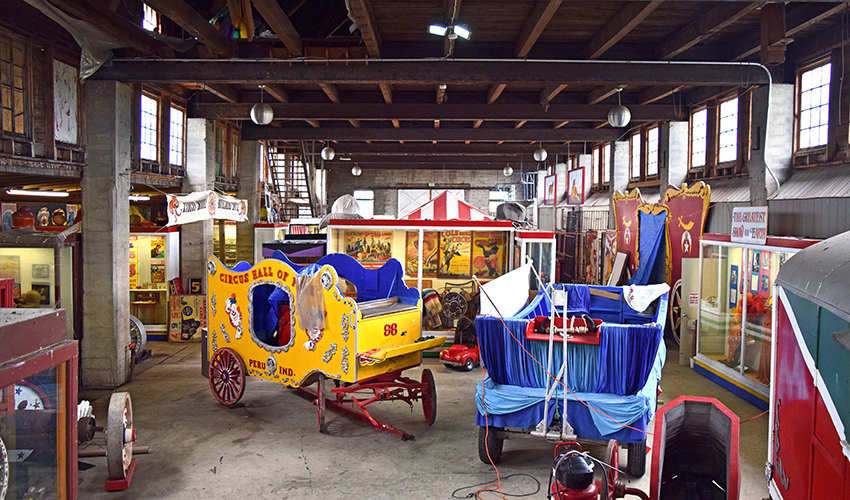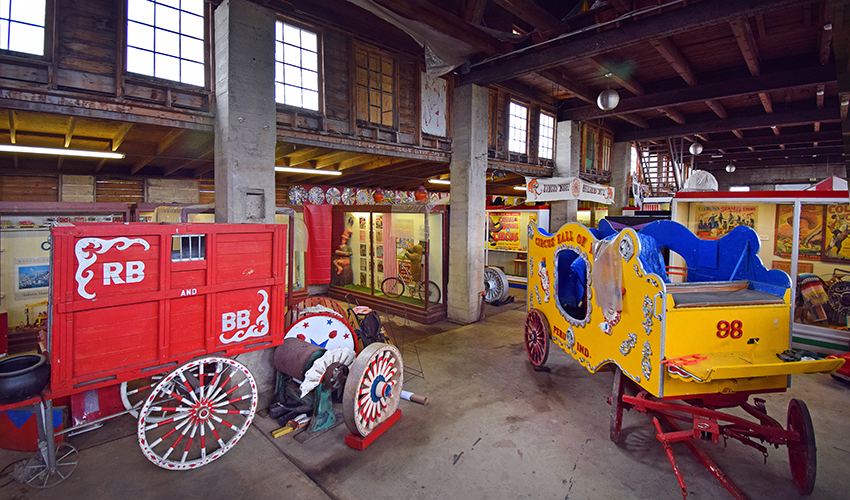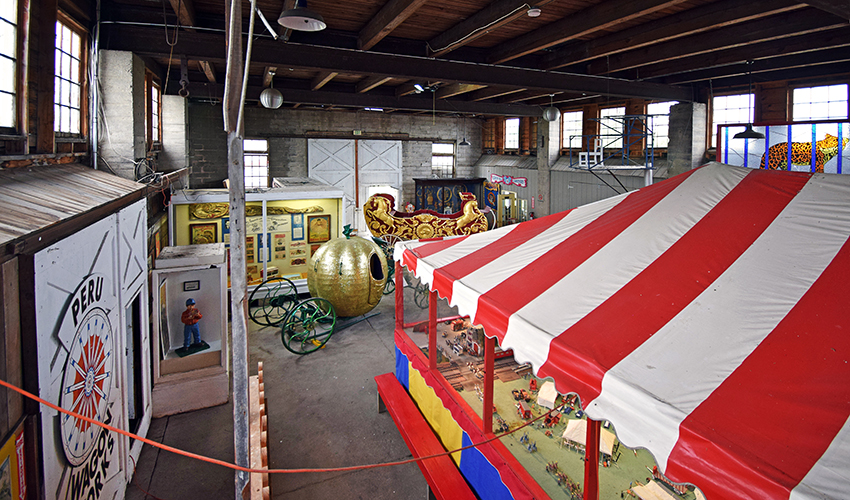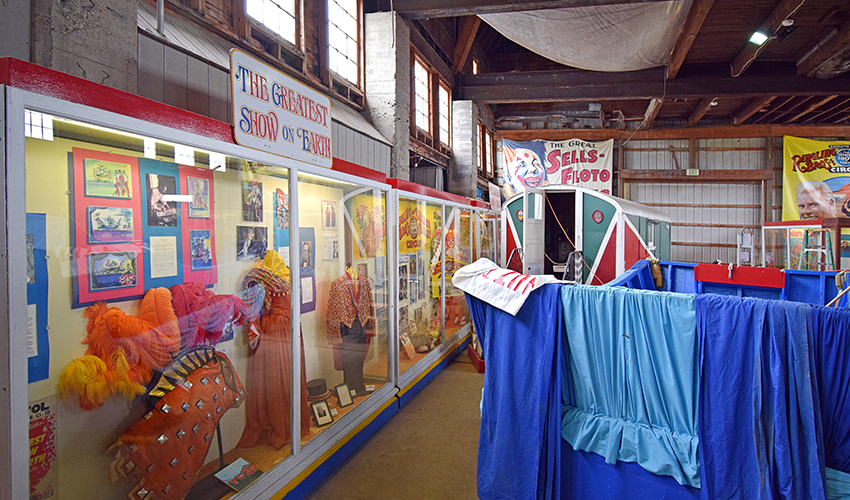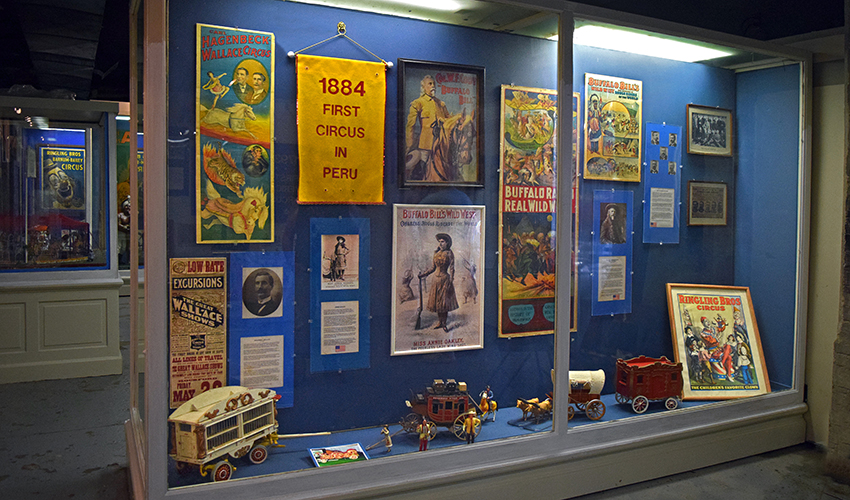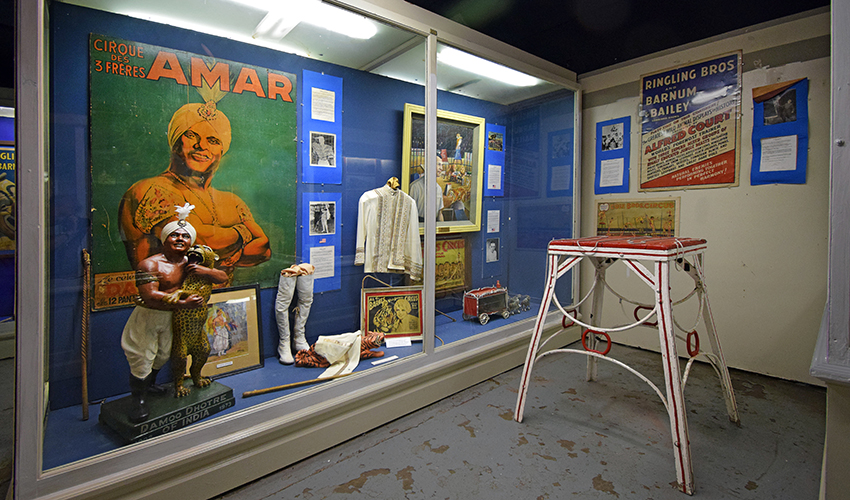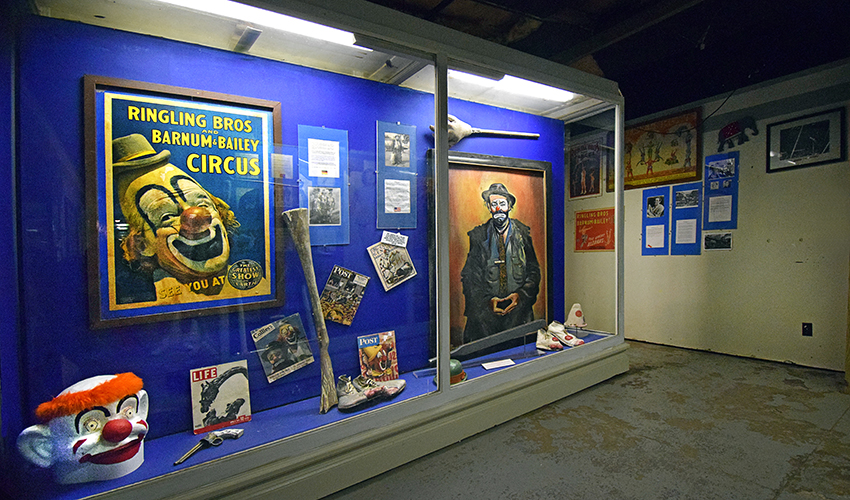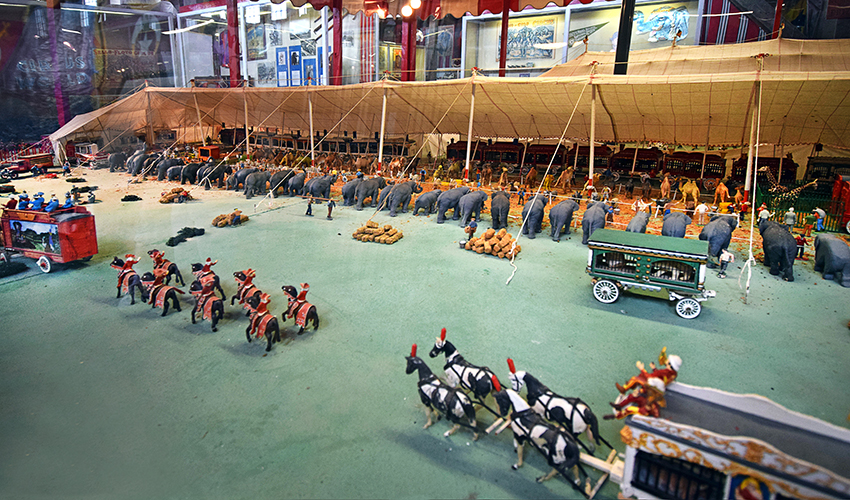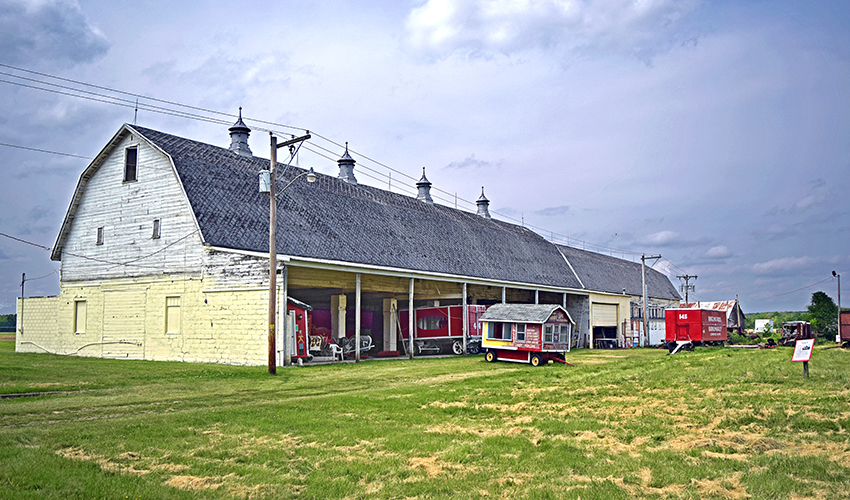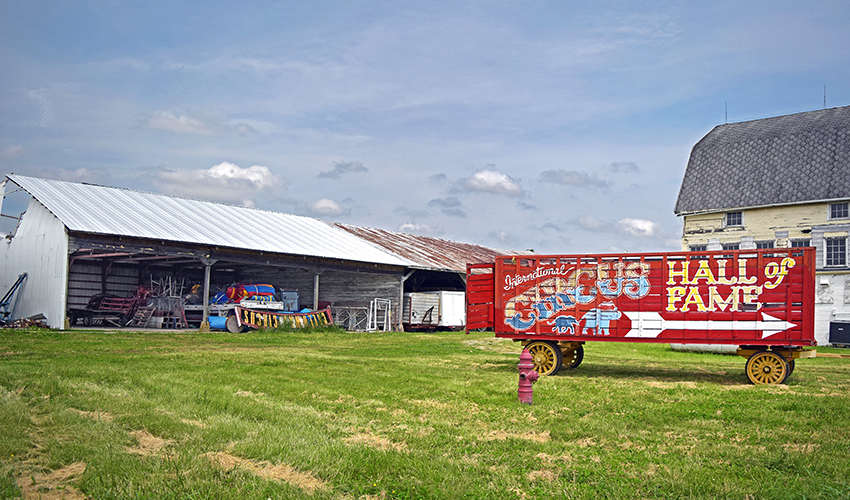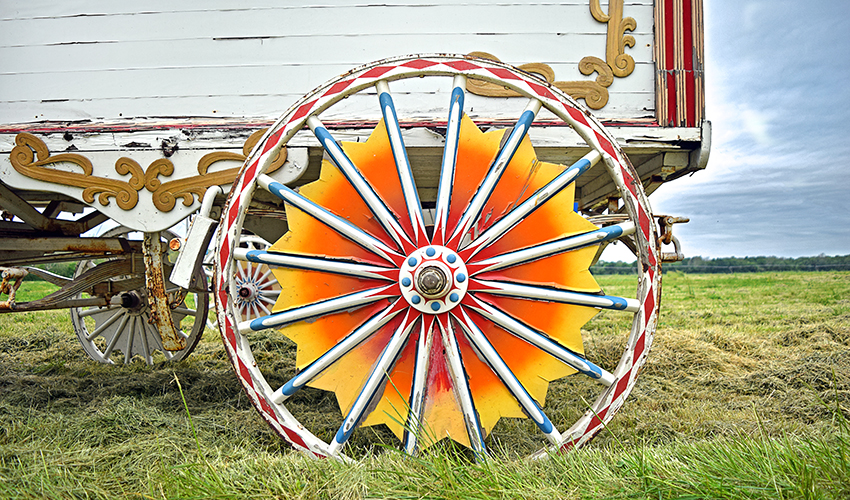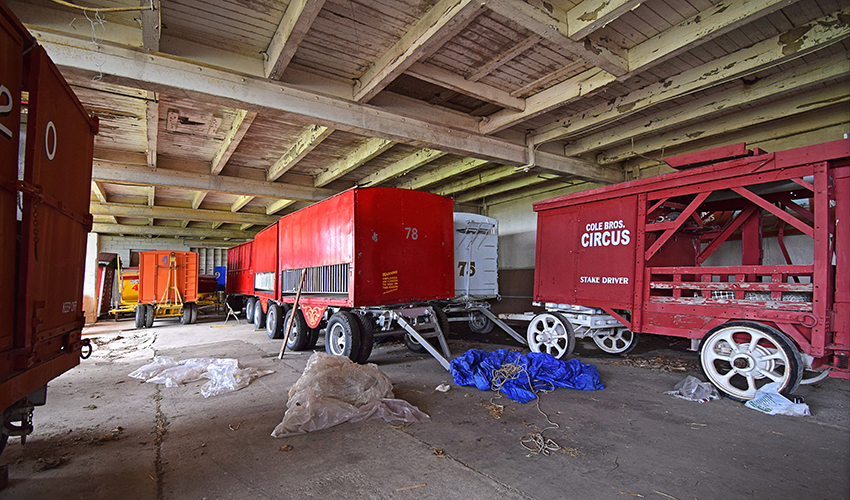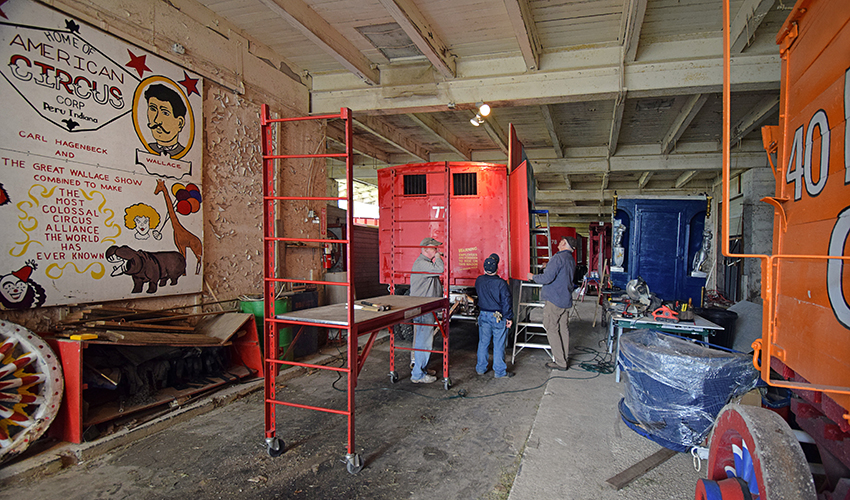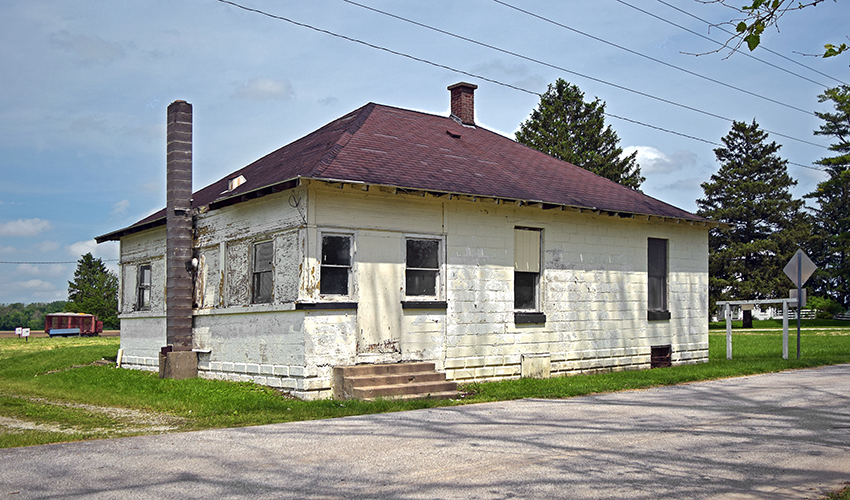NEWS
Rescuing Peru’s Circus Heritage
The International Circus Hall of Fame is working to save two 1920s barns built to house elephants, cats, circus tents, and wagons. The barns’ condition landed the site on Indiana Landmarks’ 10 Most Endangered list in 2019.
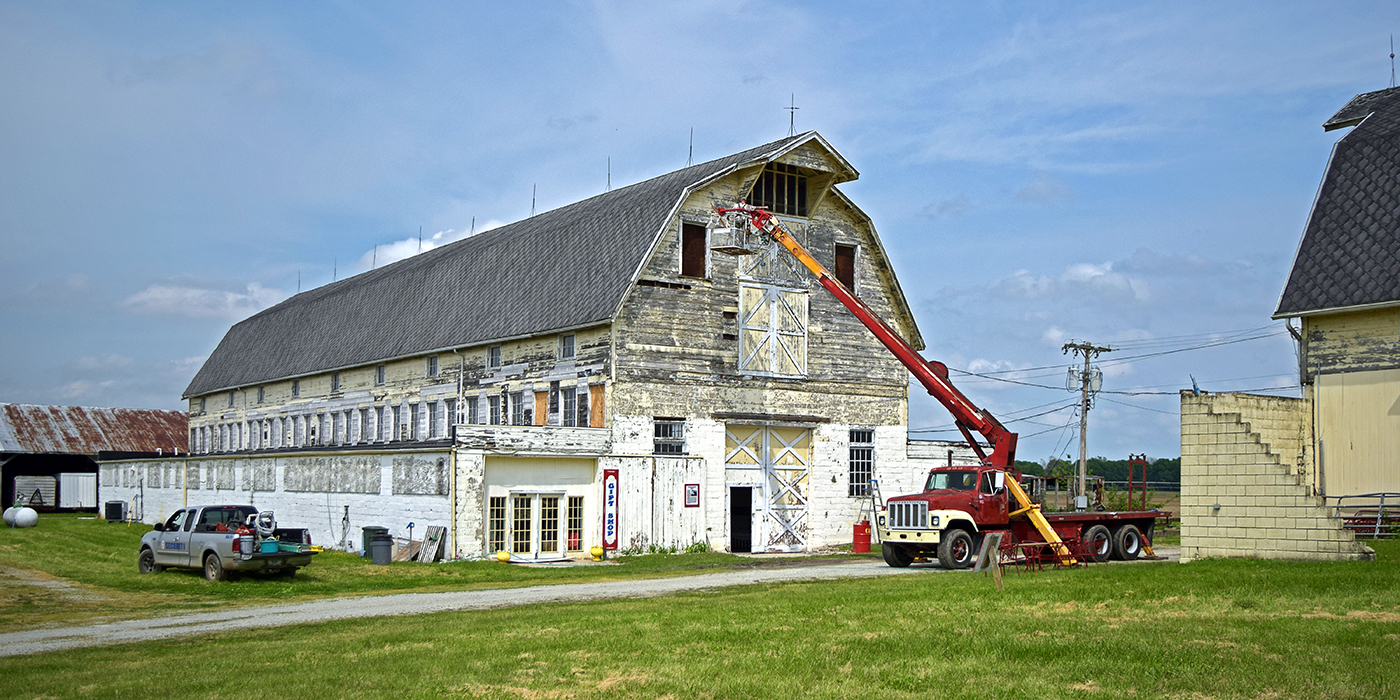
Under the Big Top
East of downtown Peru, two massive white and cream barns with peeling paint and a few missing boards offer little hint of their rich history. That heritage is more apparent inside, where brightly colored posters, ornately carved wagons, costumes, and other memorabilia trace the rise of the circus in Peru, so synonymous with traveling performing groups in the 1920s that it appeared on many maps as “Circus City.”
Today, the 1920s barns and a few outbuildings are all that remain of the former Wallace Circus and American Circus Corporation Winter Quarters, a National Historic Landmark and one of the city’s last tangible ties to its circus heritage. Now owned by the International Circus Hall of Fame, the site aims to raise $1 million to stabilize and repair leaky roofs on both barns, a daunting fundraising challenge for the nonprofit owner. This year, the landmark’s difficult situation earned it a spot on Indiana Landmarks’ 10 Most Endangered list.
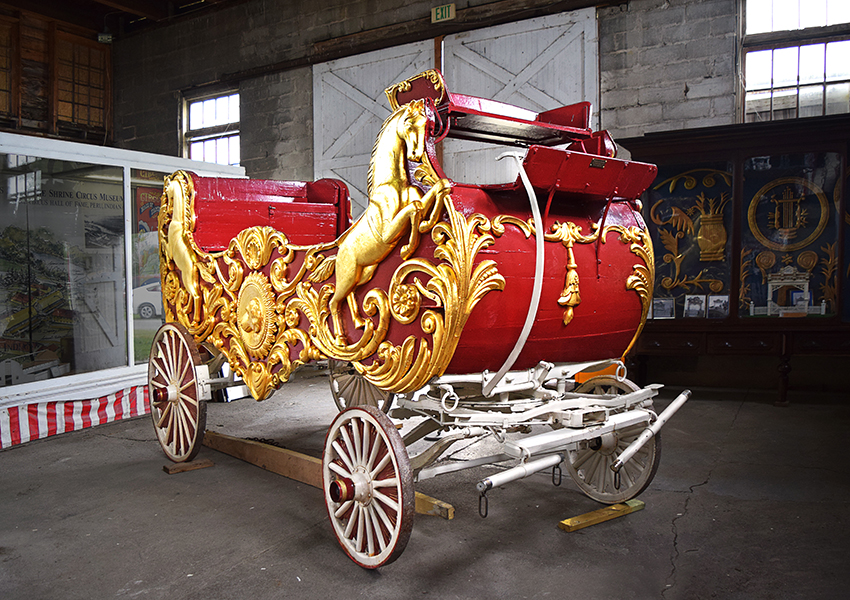
The International Circus Hall of Fame’s most popular artifact is also one of its oldest: an 1887 Sig Sautelle Band Chariot. (Photo: Lee Lewellen)
The property’s circus roots reach back to the 1891, when Peru businessman and new circus owner Benjamin Wallace bought the site for construction of a winter circus headquarters where his menagerie and performers could rest after traveling the country, repair equipment, and refine their acts. A contemporary with the Ringling Brothers, Wallace acquired other circuses and combined them with his operations.
By 1922 after Wallace’s death, the site had been purchased by the American Circus Corporation, operated by West Baden Springs Hotel owner Ed Ballard, Bert Bowers, and Jerry Mugivan. The company combined several existing circuses into one conglomerate and expanded the winter quarters, including building the two still-standing barns to house elephants and cats and the circus’s tents and ornately carved wagons.
Virtually a small circus town, the Peru site encompassed more than 30 buildings, including horse stables, training facilities, shops to repair and build wagons, tractors and other equipment, a hospital, commissary, general store, bunkhouses, a restaurant, and even a hydrant system throughout the property to fight fires. The Ringlings bought the property in 1929, along with five acres in north Peru where the circus rail cars were stored.
As the appeal of the traveling American circus waned with the Great Depression, the Ringlings burned 126 of the decorated wagons in 1941, taking the remainder to their winter quarters in Sarasota, Florida, and selling the Peru property by 1944. Used as a farm in the ensuing years, the site lost many of its circus-era buildings to storms, fire, and demolition. Only five of the headquarters’ landmarks remain today: the two 1920s-era barns, a corn crib, a wagon shed, and a gatehouse/office building where the American Circus Corporation once sorted railroad contracts and plotted their travel routes.
Today, visitors to the site see ornately carved wagons, exhibits with posters, costumes, and other props showcasing Circus Hall of Fame greats, and a miniature replica of the 1934 Hagenback-Wallace circus. The International Circus Hall of Fame’s most popular artifact is also one of its oldest: an 1887 Sig Sautelle Band Chariot, a rare carved clamshell band wagon, constructed by Peru’s famed Sullivan and Eagle wagon company for the Sig Sautelle Circus.
In May, volunteers swarmed the winter quarters for the site’s annual work week, adding a fresh layer of paint to the elephant barn and updating and reorganizing circus displays. On July 18, the International Circus Hall of Fame hosted a fundraising dinner and online auction to aid the barns’ preservation.
To help make up for the impending loss of Peru’s Terrell Jacobs Circus Barns, purchased by the Indiana Department of Transportation as part of a highway improvement project, the department agreed to provide $35,000 to the International Circus Hall of Fame, about half the cost of re-roofing the north barn. Now, the Hall of Fame is working to raise about $40,000 to cover the remaining costs of the project. You can contribute to the effort at the Hall of Fame’s GoFundMe page.
Stay up to date on the latest news, stories, and events from Indiana Landmarks, around the state or in your area.

